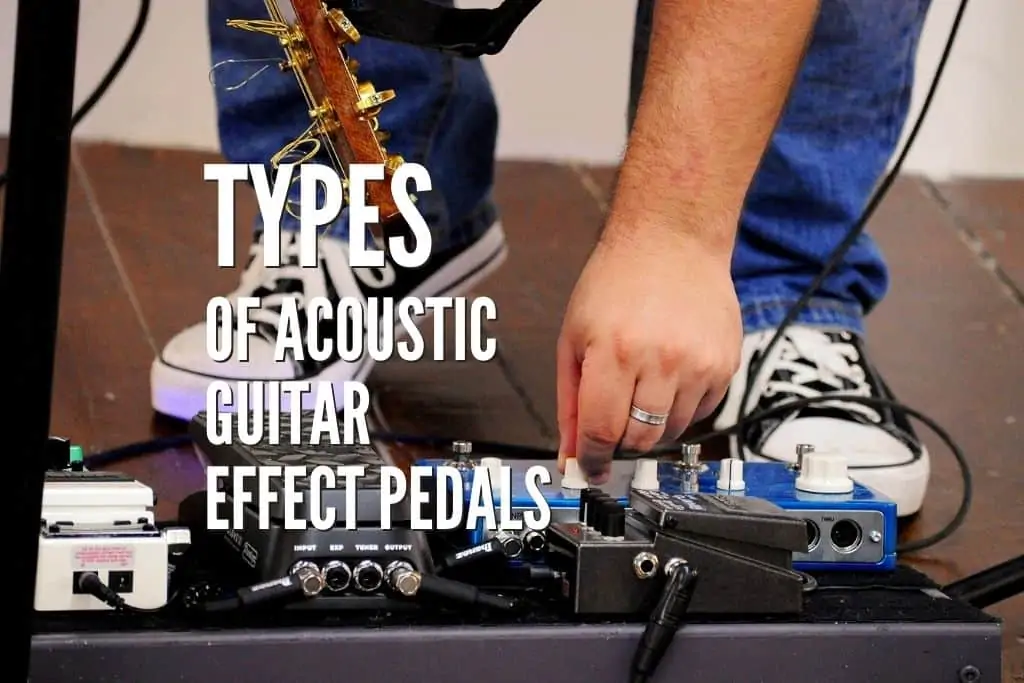While it is not common to use pedals with acoustic guitars (especially overdrive), they still have their purpose and can change the sound of the guitar or add special functionality to your preferences.
Naturally, you can use any type of pedal with your guitar, since the basic principle behind them is the same. You will plug the guitar into the pedal, and from the pedal to the amplifier. The rest is the same.
Acoustic guitars already have a rich, beautiful tone, and there is usually no need to further modify it. However, there are a couple of things you might want to try out if you are an acoustic guitar player since it can make your playing sessions a bit more interesting.
Reverb
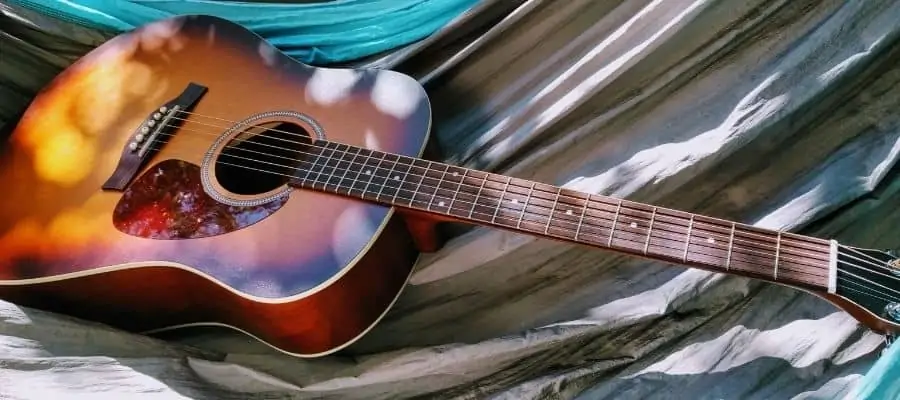
The first type of effect I’ll mention is reverb. The primary reason why we should start with it is that it is probably the most important pedal for acoustic guitars. While the tone quality is quite good for these instruments, adding reverb will significantly enhance the tone.
There is a high chance that the sound of your acoustic guitar will be a bit dull, and the easiest way to improve it is via reverb. Now, some amplifiers have a reverb effect on them, and you can use them as well. However, with the cheaper models, even if there is reverb, it is not as good as it can be. It’s always simpler to get a pedal that will create the desired effect for you.
Naturally, I’m not talking about high-end amplifiers that have exceptional reverb among other effects. But what is a reverb? Reverb is short for reverberation, which means the persistence of sound even after it is produced. In simple terms, it will create an effect as if you were playing in an empty room.
The majority of reverb pedals will allow you to choose the level of reverberation, and you can easily find the sound you enjoy. By choosing the level, you will change the “size” of the room you’re playing in. The more reverb you add, the more it will sound as if you were playing in an empty hall.
Best Reverb Pedal for Acoustic Guitar
- New MASH footswitch and shimmer effect
- Tone print- instant access to custom pedal-tweaks made by your idols!
- Stereo in & out - added flexibility to fit any set-up
- True bypass - Zero loss of tone
Picking the best anything is a little bit tricky. It all comes down to personal taste, and what you’re trying to achieve. Moreover, another important thing to consider is your budget. Some pedals can be quite expensive, so be sure you plan your budget. This way, you will have an easier time finding the pedal of your dreams.
Here, I will talk about TC Electronic Hall of Fame 2. The design and functions are similar to those you can find on MXR M300, and they are both in the same price range. Hall of Fame 2 has four knobs.
You can adjust Decay, Tone, Level, and Type of reverb. There is an additional switch to select pre-delay, and the pedal has a true bypass.

Chorus
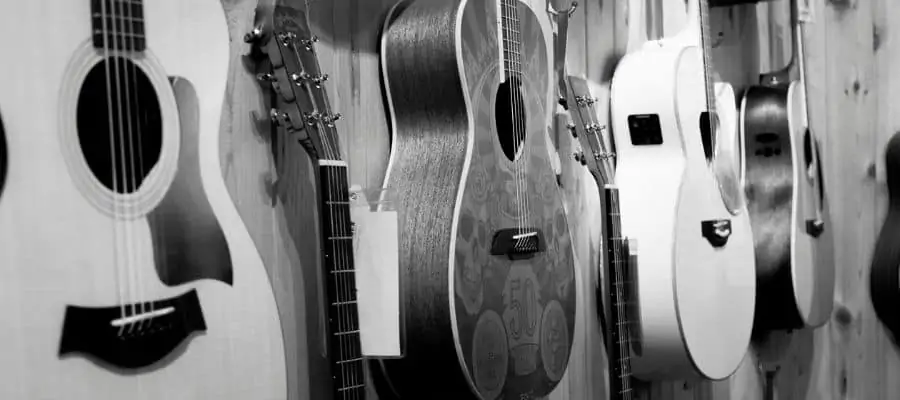
The next pedal you might want to consider adding to your pedalboard is the chorus. So, what is this pedal? Chorus is another way to make your guitar sound fuller. It will take the sound of your guitar, duplicate it, and then shift it a bit.
This will create an effect as if there was more than one instrument playing the same tune. The idea for the name came from the real choruses (choirs), where a group of people will sing at the same time. As you probably know already, each person in the choir has their own job, and they all sound different.
The majority of pedals will have at least two knobs, allowing you to adjust rate and depth. Of course, the chances of having only two potentiometers are quite low, which means you’ll be able to shape the tone even more.
Now, I should mention that the majority of pedals here are not designed for acoustic guitars exclusively, and they work on both acoustic and electric guitars.
Best Chorus Pedal for Acoustic Guitar
- Musically voiced Rate and Width controls
- Bass and Treble controls for EQing the chorus voice
- Stereo outputs for huge tonal spread
- Model Number: M134
To make things even more interesting, you might want to check out the stereo chorus. A perfect example comes from MXR and its model M134. The pedal has five potentiometers. The first part of the pedal is reserved for shaping the tone, and it has Treble and Bass pots.
The second part is for the effect, and you can find Intensity, Width, and Rate. To get the idea of how Stereo Chorus sounds, you can check the video. Now, bear in mind that the sound will be a bit different since you’ll be using it on the acoustic guitar.

Delay
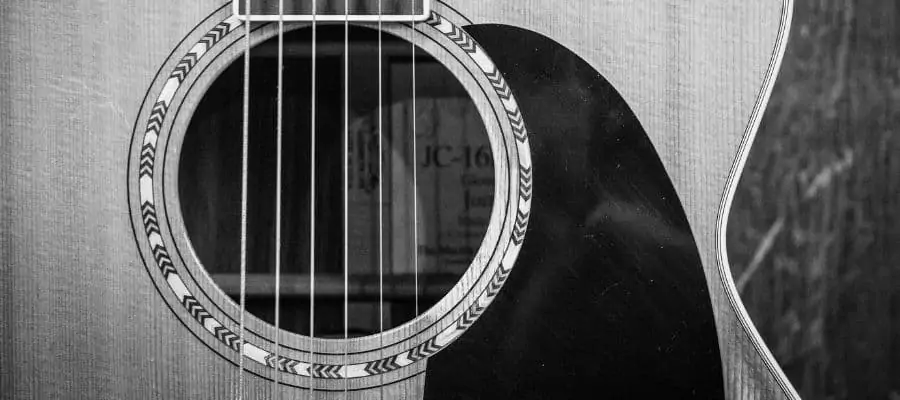
Delay is one of the most popular pedals for electric guitars, and it works rather well with acoustic ones. The idea behind the pedal is quite simple, and you can probably guess from the name. Once you play something on your guitar (even if it is a single note), the pedal will repeat it periodically for as long as you want.
The name comes from the effect the pedal creates since the sound you play will come after a delay. Naturally, you can choose how quick the sound will repeat, and even how long the repetitions should last. It is an interesting effect you can use to create incredible music.
One of the main problems with a delay pedal is that you might need some time to get used to it. The pedal requires practice and knowing how to set it up before you can start playing. While some delays offer a tap tempo option to allow you to easily match the tempo of the song with the effect, it’s not something you can find on every single pedal.
Best Delay Pedal for Acoustic Guitar
- Same bright, jangly sound in a more pedalboard-friendly package
- Perfect for tone-thickening and old school slap-back delay
- All-Analog signal path
- Simple three-knob interface
As with previous examples, there isn’t a delay pedal designed for acoustic guitar specifically, but you can use the one you find without any problems. One of the great examples is Aqua-Puss by Way Huge.
It is an analog pedal, and it looks amazing. It comes with a sturdy metal case, and there are three potentiometers you can use – Delay, Blend, and Feedback.

Needless to say, you don’t need to go wild on the effect, and you can use just a tiny bit of delay to spice up the sound of your acoustic guitar.
Looper

The next pedal on the list is a looper. Looper is an excellent choice if you perform alone, but you can also use it with the rest of the band as well. The very idea behind the pedal is that you can record and loop chord progression during the show.
This way, you can create your own backing tracks, and perform live as a one-man-band. In the past few years, the idea has been popularized by Ed Sheeran, who performed a couple of songs alone using the looper pedal.
Now, you can loop any part of the song, and it doesn’t have to be a chord progression, but it is the most common use of the effect.

The power of a loop pedal is incredible, especially if you have a good idea behind it and know how to use it.

Mastering the loop pedal is far from easy, and it’s rather impressive how some people can nail it on the first try. Now, the pedals that can allow you to record high-quality samples over and over again can be quite expensive, but you can still find some incredible models for a lower price.
Best Loop Pedal for Acoustic Guitar
Even if you like the loop station Ed Sheeran uses, you’ll have trouble finding it. This is why I would suggest getting Boss RC-30 Loop Station. It would take too much time to list all the functions Boss RC-30 has.
It is an excellent pedal and gives you tons of options for looping and recording samples. While you can find numerous other pedals, you might want to get something that won’t make the sound muddy after a couple of loops.

It is also worth mentioning that you can find 2-in-1 pedals that offer both loop and delay, as well as processors.
Tuner
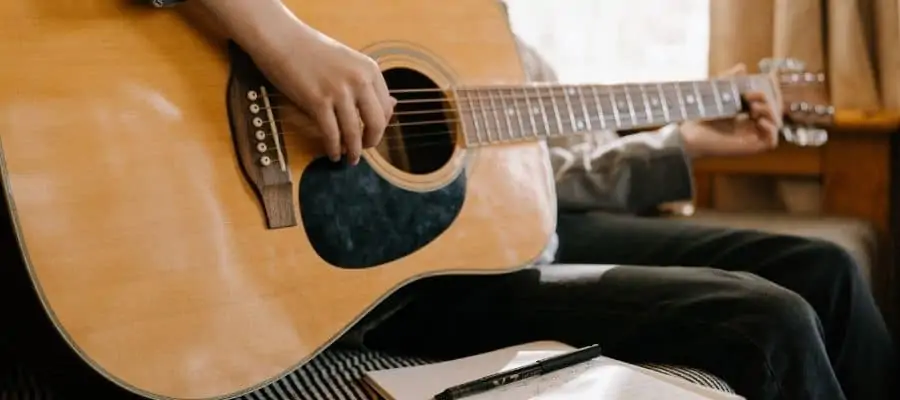
Now, this one is pretty self-explanatory. You need a tuner to ensure that your guitar stays in tune no matter what. While some people are able to tune the guitar by ear, it’s always easier to use a pedal instead.
Furthermore, a lot of people have small clip-on tuners, and that’s perfectly fine. But if you play on stage, it might be challenging for you to tune the guitar quickly. Needless to say, using the tuner that relies on the sound is impossible on stage, and you’ll need something that can work even if the place gets noisy.
Placing the tuner on your pedalboard can save you a lot of time, and it will allow you to set up everything quite fast.
Best Tuner Pedal for Acoustic Guitar
When it comes to the tuner, you can pick nearly anything you like. The science behind these pedals is not really advanced, and you should be able to find decent ones without spending a fortune on them.
If we’re talking about the best options, I would suggest going for the PolyTune 3 by TC Electronic. While the price might seem a bit too high, you will get an excellent product that will keep your guitar in tune no matter what.

It comes with a bright screen that will allow you to see the display even during daylight, and you can check the tuning by strumming all strings at once.
Phaser
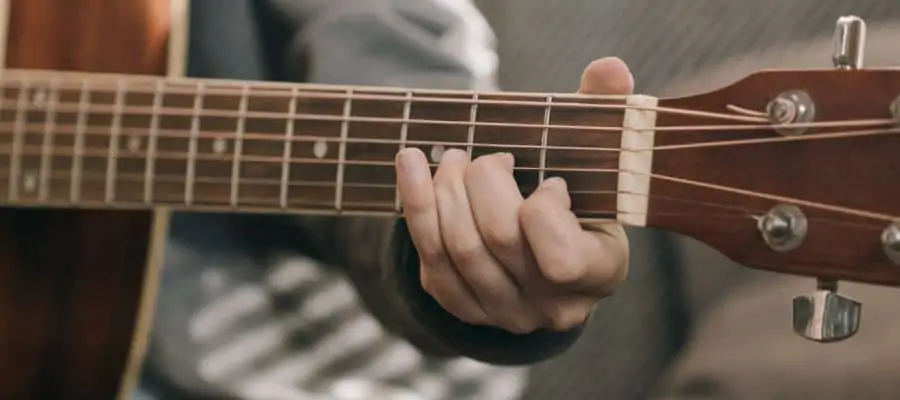
Phaser pedals, short for phase shifter, are one of the first pedals that appeared on the market. The idea behind them was to simulate the rotating organ speakers. Eventually, guitar players realized that they can create so many incredible sounds using a single pedal.
It is a modulation pedal and another example of the effect that works great on acoustic guitar as well. The pedal creates a well-known rotating sound that will make playing slower songs even more exciting.
The reason why I say slow songs is that it is the area where phaser really shines since it has time to fully enhance the tone. While you can play it on any song you want, the difference won’t be as notable as with something with a slower tempo.
Best Phaser Pedal for Acoustic Guitar
- Phase Shifter Pedal f Guitar/Bass
- New "Rise" and "Fall" modes create unidirectional phasing
- Realtime control of Rate via optional expression pedal
- Includes classic multi-stage phasers with selectable stages
As with previous examples, the phaser is not something that’s designed specifically for acoustic guitars. While you can find numerous different brands and types of this pedal, I would suggest getting something with a lot of control.
For example, Boss PH-3 is an excellent option. There are four knobs you can notice on the top of the pedal. There is a potentiometer for Rate, Depth, Res, and Stage. You can also set the tempo by holding the footswitch.

When it comes to design, the pedal looks the same as any other Boss pedal, which is something that many players will appreciate.
Flanger
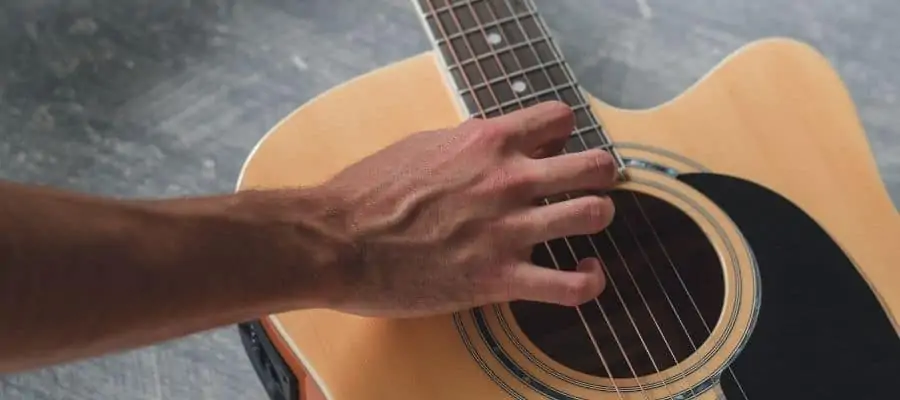
Now, the flanger is an interesting pedal. Some people love it, and others hate it. One of the main advantages of flangers is their versatility. You can make it sound like a chorus pedal, or create that famous jet sound.
The pedal is rather popular for the heavier genres and anything with a lot of distortion. Of course, when you play an acoustic guitar, you won’t need to turn it all the way up. The charm of the flanger is in its soft and subtle approach.
The flanger is a modulation pedal, and it can often sound a lot similar to the chorus effect. Both flanger and chorus are time-based effects. As with other pedals, you’d want to look for something with a lot of knobs and options so you can find the sound you enjoy.
Best Flanger Pedal for Acoustic Guitar
- The DSP architecture delivers convincing jet-engine roar, authentic...
- The ability to re-trigger the LFO cycle opens up a fourth dimension of...
- New Flexi-Switch silent relay based switching allows for traditional...
- Made with care by human hands in Akron, Ohio
An example of a great pedal with a lot of options for adjusting the sound comes from EarthQuaker Devices called Pyramids. There are eight knobs divided into two rows. In the first row, you can find Manual, Rate, Width, and Mix.
The second row is for Presets, Feedback, Modify, and Mode. It is an incredible pedal you can use on both acoustic and electric guitars, and there are no limits to what you can achieve. While you can easily find cheaper flanger pedals on the market, they usually don’t offer nearly as much customization as the Pyramids.

Flanger can be a great addition to your pedalboard, and it is an excellent way to improve and enhance the sound of the acoustic guitar. Of course, the effect might not be to everyone’s taste, and you might need some time to find the tone you like.
Uni-Vibe
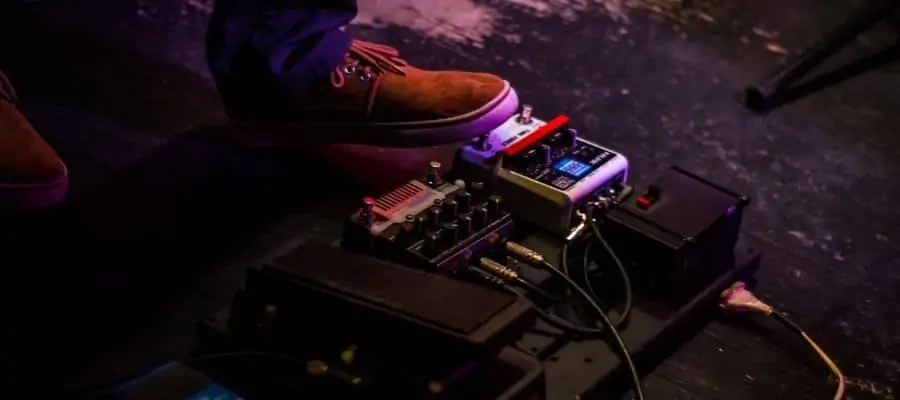
Before we talk about uni-vibe (or univibe), let’s take a look at the early history of rock music. Leslie speakers were rather popular during the days. If you don’t know what it is, it is a rotating speaker that creates an almost magical sound.
But the main problem with Leslie speakers was that it wasn’t practical. A company from Japan decided to create a pedal that would simulate the Leslie speaker, but the product they created was something else. They created uni-vibe. The pedal was popularized by Jimi Hendrix, and it is a beautiful effect you must check out.
It is a modulation effect that’s something between a phaser and a chorus.
Best Uni-Vibe Pedal for Acoustic Guitar
- Iconic Chorus/Vibrato true to the classic late '60s tone
- Simple three-knob interface
- True bypass
Since getting your hands on the original uni-vibe will be nearly impossible, you’ll need to try out something else. Here, I will mention MXR uni-vibe. The pedal has a standard MXR design, with a metal case and three knobs.
You can choose Depth, Speed, and Level. There is also a switch to select vibe since the pedal is a mixture of vibrato and chorus effects.

The pedal has a recognizable sixties sound, which sounds amazing when paired with an acoustic guitar. It is also an excellent option for those that were looking for something similar to the chorus.
Octaver
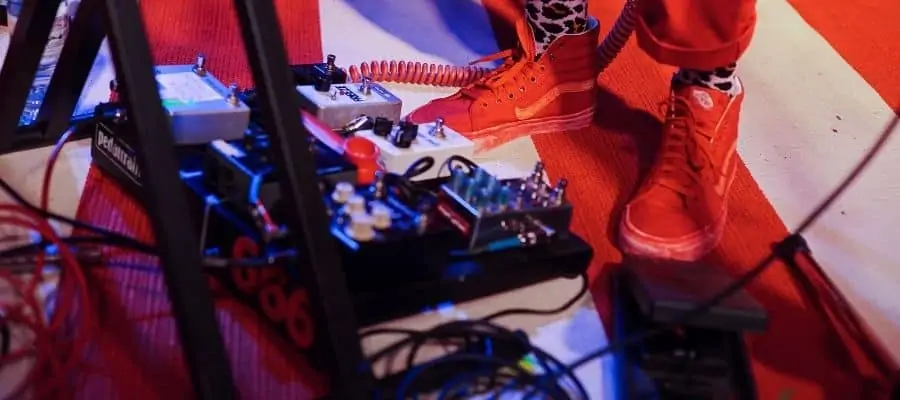
Octaver is a pitch-shifting effect. The idea behind the octaver is to create a note one octave below the note you were playing. You can also find pedals that can produce a note that’s one octave above the played one, or even two octaves below (or above).
Traditionally, octavers are monophonic, which means that you can only play a single note at a time. Octavers are available in both analog and digital forms, and modern ones can work with multiple notes or chords.
It is worth mentioning that some octavers have their own distortion, but it isn’t something that people often use with acoustic guitars. While octavers can be a lot of fun, players usually use them to make their guitar sound like a bass.
When it comes to pedals for acoustic guitars, the octaver is probably the most underestimated pedal you can find.
Best Octaver Pedal for Acoustic Guitar
- package dimensions :6.35 cm L x 11.43 cm W x 15.24 cm H
- Product Type :INSTRUMENT PARTS AND ACCESSORIES
- country of origin :China
- package weight :2.0lbs
While there are many great pedals you can find online, the Boss is probably the best one, and it is quite affordable. Super Octave OC-3 or OC-5 if you can find one, is something you need to check out.
It has four knobs on the top and a standard Boss design. The potentiometers allow you to select Direct Level, OCT 1 Level, OCT 2 Level, and Mode. It is also easy to use, and you’ll be able to find the tone you like in no time.

Needless to say, you might need a bit of practice before you can start using the pedal smoothly and without any issues.
Compressor
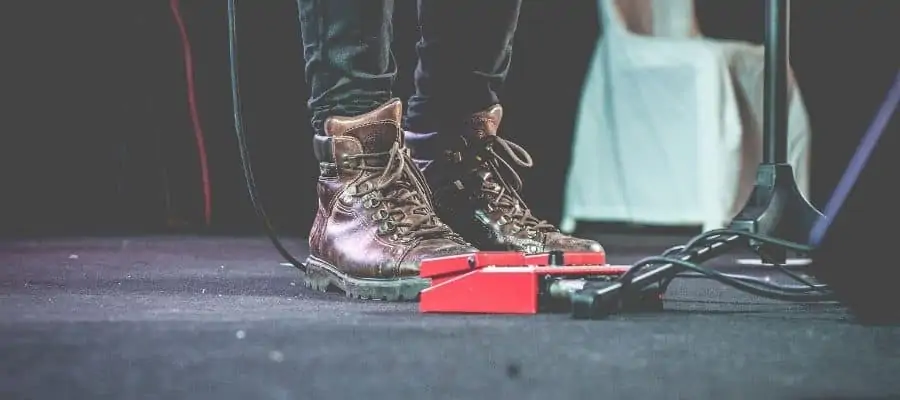
The primary idea behind compressors is to create sustain without clipping the sound or creating distortion. They are also perfect for controlling the dynamics of the notes. Acoustic guitars are quite dynamic.
You can start playing slow and soft, and gradually increase the volume and intensity of the notes played. But sometimes, you might want to have more control over the dynamics of the sound, especially if you plan on performing live.
The compressors give you the option to select the range of the volume, so you can play without wondering how the guitar will sound. In essence, they give you control of the output and the sound that comes out of the speakers.
While they are not essential for playing the guitar, compressors can be a nice addition to your pedalboard. Needless to say, you don’t need to go over the top and limit the volume of your guitar. As with the majority of acoustic guitar pedals, the key is in subtlety and enhancing the sound while still keeping the magic of the acoustic guitar.
Best Compressor Pedal for Acoustic Guitar
- Brings a new level of of control to what is expected and needed by today's...
- Based on our original Ego but featuring switches for tone (dark and bright)...
- Allows your original signal to be blended in so you can get all the...
- With this pedal you can have full country squash or open studio level...
Now, bear in mind that the majority of compressor pedals are designed for electric guitar. Since electric guitars often use overdrive or distortion, you will need to look for a pedal that can work with acoustic guitar as well.
Usually, you can just look for a pedal that offers a Blend or Mix potentiometer at the top. One of the models you should check out is the Mini Ego Compressor by Wampler. The pedal has Blend, Sustain, and Volume potentiometers, as well as two switches for tone and attack.

Mini Ego Compressor is one of the most popular compressors for acoustic guitar, and if this isn’t enough, you can always check out the “full” version with two additional knobs instead of switches.
Equalizers
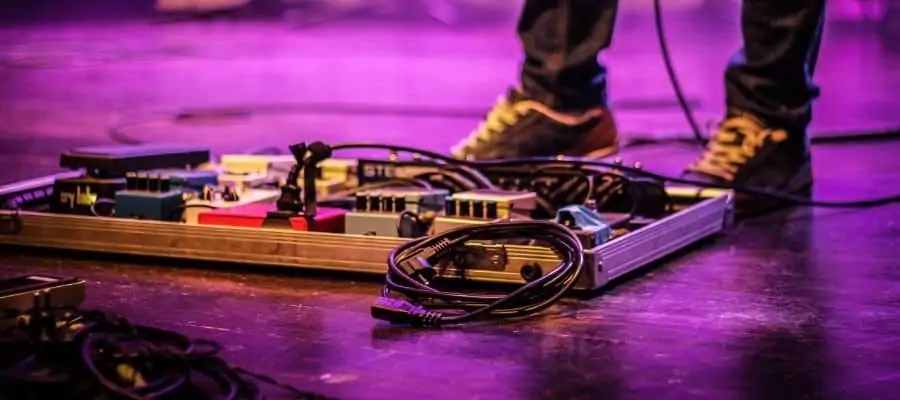
If you own an acoustic guitar with a pickup that can be plugged into the amp, you probably already have an EQ on it. So, why would you need another pedal, you might ask. Well, the answer is simple, it gives you an option to further shape the tone of your guitar.
Most acoustic guitars come with three or four sliders to adjust the tone, and that might not be enough. An EQ pedal has the same purpose as sliders on the acoustic guitar but gives you more options.
Usually, you can adjust the volume and gain of the guitar without messing with each individual pedal. From there on, you can use the slider on the guitar to further shape the tone during the song, in case you need to play a part louder or softer.
Best Equalizer Pedal for Acoustic Guitar
- Cut or boost 10 different frequencies up to ±12dB
- LEDs provide high visibility, even in direct sunlight
- 18-volt operation for increased headroom
- Two outputs for running two separate signal chains
One of the best EQ pedals you can find on the market comes from MXR. The pedal I’ll mention here is Ten Bands. It comes with two separate sliders for volume and gain, located on the sides of the EQ.
Additionally, you will get ten more sliders (which explains the name of the pedal), to further adjust different frequencies.

MXR Ten Bands looks great and does an incredible job shaping your tone. Moreover, each slider has an LED so you can easily see the settings even in the dark.
Expression Pedal
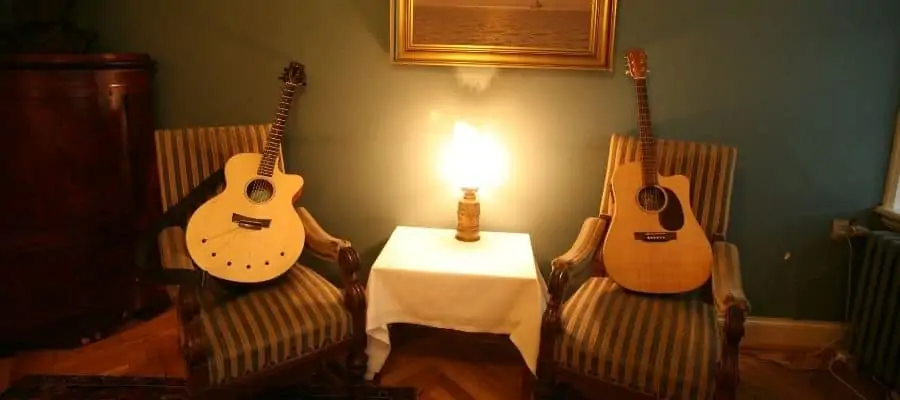
The next one on the list is the expression pedal. The design of expression pedals is similar to the wah effects. You can use it to control the voltage on the pedal by rocking it back and forth in the same way people use wah.
Of course, the primary difference between the wah pedal and an expression pedal is in the effect they create. The expression pedal is mostly used to regulate volume, which works in the same way potentiometers do.
However, it is a lot easier for some people to regulate the volume using the pedal instead of turning the knob on the guitar. If we consider that acoustic guitars have sliders on the EQ for volume, you can understand how useful the volume pedal can be.
There are two types of volume pedals – active and passive. The active ones come with a buffer, which means that there is no signal loss once you start using it on the stage.
Best Expression Pedal for Acoustic Guitar
- Controls volume levels and FX parameters
- Low Friction Band-Drive for smooth, durable performance
- AUX output for switchable tuner/expression functionality
- Item Package Dimension: 6.7322834577L x 3.4251968469W x 3.3858267682H...
A great example of expression pedal comes from Dunlop. The Volume X Mini Pedal DVP4 allows you to control volume levels and FX parameters. It’s also smaller compared to the DVP3, which will allow you to easily fit it on the pedalboard.
It’s lightweight, easy to use, and gives you full control over the volume of your acoustic guitar.

Volume pedal can be a nice addition to your pedalboard, and it improves control over the output of the guitar. Naturally, you might need a bit to get used to control the volume using your foot.
Preamp
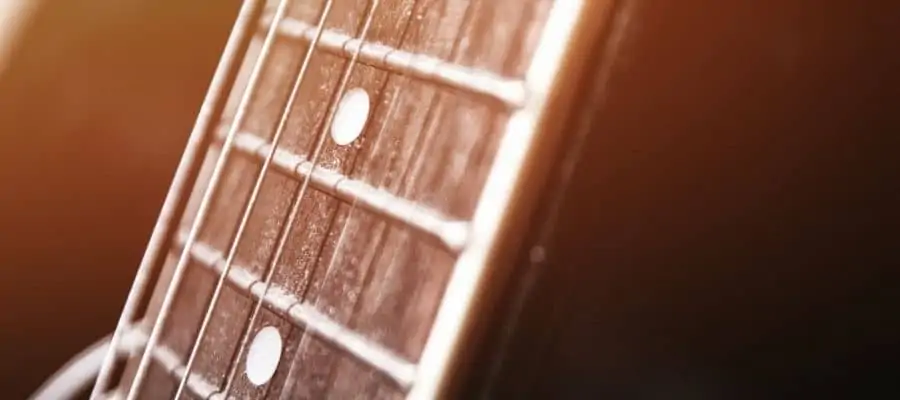
The final entry on the list is preamp pedals. They are excellent for those looking to downsize their rigs since preamp pedals have tons of different settings and fine-tunings you can use.
A preamp or preamplifier is an amplifier that can enhance the weak signal from the guitar, and make it usable. Of course, acoustic guitars already have a decent signal thanks to the resonating box, but it can help you enhance it even further.
Preamps are not necessary for all guitars, but it is a nice addition. More importantly, they are almost necessary if your guitar has piezo pickups.
Best Expression Pedal for Acoustic Guitar
No products found.
A perfect example of a preamp for an acoustic guitar is Audio Sprockets ToneDexter. The pedal has seven potentiometers – output level, notch, bass, treble, character, wave map, and pickup level trim.
There are also two switches. The first one is for mute, tune, and edit, and the second one is for the boost.

The pedal is durable, sturdy, and it looks great. You can check out the video to get a better idea of what you can achieve with it, and the ToneDexter can be a nice addition to your pedalboard.
Summary
Pedals are an essential piece of equipment if you are playing the guitar. What many people forget is that they work for both acoustic and electric guitars. Of course, the purpose of each pedal remains the same, but there are a couple of effects that you need to have for your acoustic guitar.
Here, I covered some of the most important pedals you might want to find, and each will allow you to create unique and different sounds during your sessions.
Since we are talking about acoustic guitars, there is no need for you to go over the top with effects, and using something subtle will significantly improve the quality of tone coming out of your guitar.
If you found this article useful, you may want to save this pin below to your Guitar board.
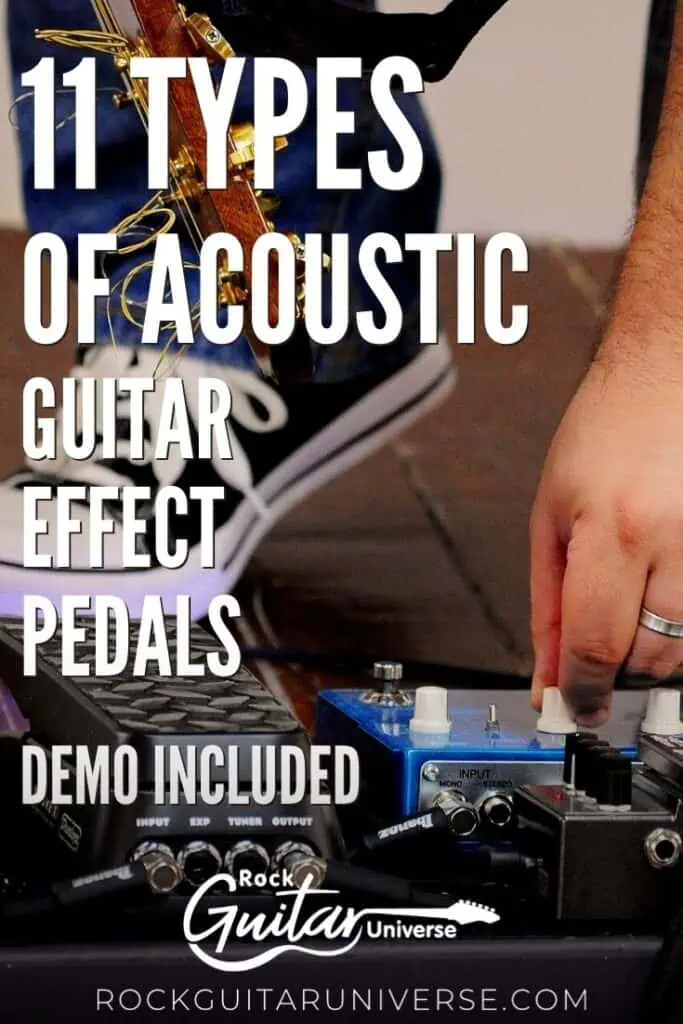
Last update on 2025-07-01 / Affiliate links / Images from Amazon Product Advertising API
Recent Posts
Some guitarists insist on buying an expensive amplifier with their electric guitar. They assume that this is a must for every type of guitarist out there. However, in some situations, this isn’t...
Top 50 Free Realistic Guitar VST Plugins With Sound Examples
As technology has rapidly advanced in the recent decade, computers are stealing more and more roles from physical musical instruments and accessories. Nowadays, you do not need expensive amps,...

